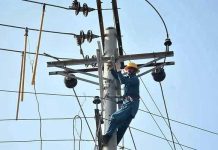ISLAMABAD: STEM Programme is setting up technologically equipped schools for boys and girls in all the provinces to improve gender inclusion, reports WealthPK.
Dr. Ahsan Feroze, Project Director of STEM Programme (Science, technology, engineering, and mathematics), told WealthPK that STEM was not dividing or distributing technology and science related facilities on the basis of gender but rather it was giving both boys and girls an equal opportunity to learn.
‘’STEM is offering experimental benefits for girls and is also training female faculty members in the domain of technology. We are currently setting up a technologically advanced and equipped school for girls in Quetta,” he said.
Talking about the reason for male-female technological divide, Dr Ahsan said there was a natural divide between medical and engineering classes in the provincial colleges because girls were more inclined to medical studies while boys had a proclivity for the engineering courses. Since boys have studied many technology-related courses till graduating, that’s why they have more skills in this particular domain, he added.
Dr Ahsan told WealthPK that now girls were also coming forward in the field of technology and showing interest in software engineering, mechanical engineering and civil engineering.
‘’Now girls are not just comfortable with the medical domain, in fact they are also excelling in computer science. This global divide of technology between the girls and boys is decreasing day by day,’’ he added.
He said STEM gave hands-on learning experience related to technology-based problems and projects. The core component of STEM is technology. Female participation in the field of information and communication technology (ICT) was also on the rise, and new programmes were being implemented to increase women’s inclusion in the technology sector.
Haider Zaman Khattak, Project Director of Pakistan Science Foundation, also emphasized the need for providing an equal opportunity to both boys and girls in the field of science and technology.
Female participation in STEM fields is a difficulty across the world, especially in Pakistan where only 20% of the workforce is female though the National Security Policy recently announced by the government emphasises the critical role that technology and women may play in the country’s economic progress. In developing countries, technology is increasingly being used to promote economic growth, employment, and empowerment.
The UNESCO announced its collaboration with Pakistan Telecommunication Authority (PTA) on digital inclusion and gender mainstreaming strategy. PTA Chairman Amir Azeem Bajwa said they are dedicated to ensuring women’s access to technology and improving gender inclusion in the ICT sector.
The goal of Vision 2025 and the upcoming 11th Five-Year Plan is to create an enabling environment and equitable chances for women to reach their full potential and benefit from economic growth, prosperity, and social development as a result of the federal and provincial governments’ actions.
The Alliance for Affordable Internet (A4AI) and the Pakistan Telecommunication Authority (PTA) have also signed a Cooperation Agreement to address the digital gender divide in Pakistan.
The partnership reflects a shared value and focus for pursuing joint collaboration opportunities within each organization’s respective vision, mission and program focus in the context of promoting access to affordable internet services in Pakistan, specifically the A4AI policy and regulatory good practices and the guiding principles to support rural, rural-urban broadband policy framework and bridge the digital gender divide.
The partnership will ensure that the digital gender issues are integrated into policy processes and programmes and include more women, girls and marginalized communities in the digital economy.






